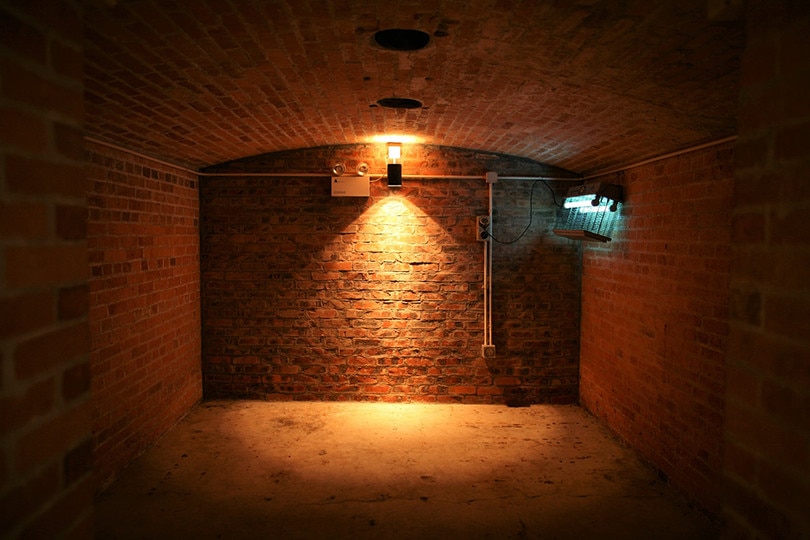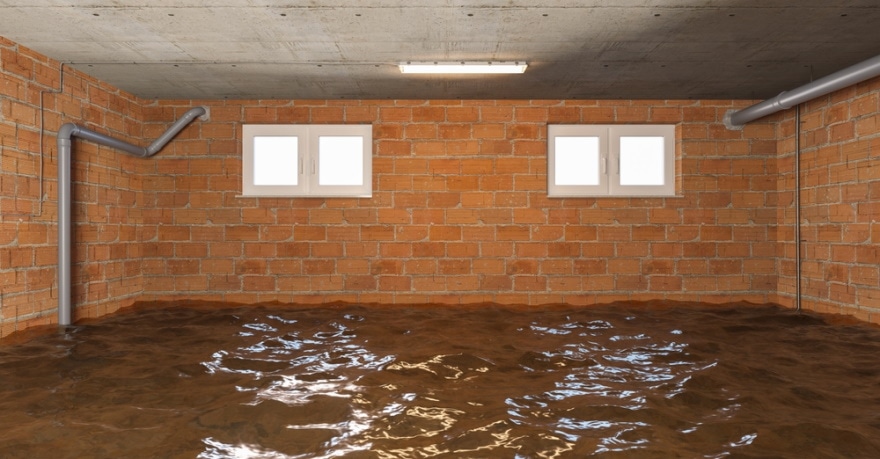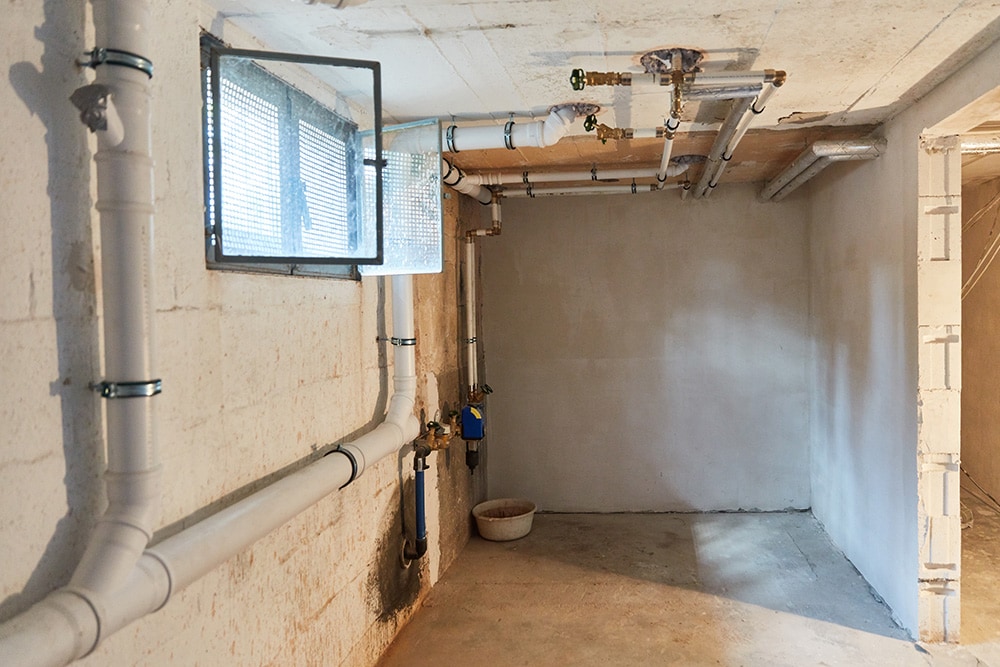What Is an English Basement? Advantages, Disadvantages & Tips
-

- Last updated:

If you have ever lived in a densely populated city such as New York, Toronto, or London, you’ve probably come across a dwelling or an apartment slightly below ground level, also known as an “English basement.” They have been extensively used in densely populated areas to increase a property’s square footage and provide shelter for young people at much more affordable rates.
English basements have been a part of London’s architecture design for decades, but they also made their way to the United States. They occur when extensive excavation takes place while digging a building’s foundation and are only partially exposed above the ground level. Property owners can either convert them into a building’s appliances spaces or a simple dwelling.
This article will look at English basements and everything you need to know about them. So keep reading to learn more.
 What Are English Basements?
What Are English Basements?
English basements are housing units located below the lowest level of a high-rise building. They are usually one or two-bedroomed, self-contained apartments, with their most notable feature being that they are partially buried underground.
They transpired out of London’s 19th-century building boom, allowing tenants to live comfortably below row houses. However, you can also find them under row houses in the United States and share the same characteristics as their counterparts, which include:
- Small windows are located on the upper part of the internal wall, almost touching the ceiling to let in as much natural light as possible. Note that it’s not always possible to open the windows due to their placement on the street level.
- Large air vents on the walls’ upper side connect outside ambient air to the side of the apartment. This ensures enough air circulation to keep it fresh and avoid stuffiness.
- A separate door leading to the apartment is present, which is also different from the building’s main entrance. This helps make the apartment self-sustained and adds some sort of privacy.
- They are located at ground level and with part of their structure below ground but are still considered hospitable.
On the other hand, this space—which would virtually be unutilized basement space—acts as an added income source for the property owner. Furthermore, it acts as a high-quality subsidized rental unit for a tenant who doesn’t mind living in a partially buried apartment.

Where Are English Basements Mostly Found?
English basements are found in high population density areas in most large cities. Living spaces in these areas are hard to come by, either because of construction codes that restrict the construction of supertall buildings. Or because of higher growths in population numbers than in residential premises.
Therefore, existing property owners get creative and utilize English basement spaces that would have otherwise gone unused for living.
The city of London was where they first made their appearance. However, this is not to say they are not popular in the United States. On the contrary, you can find English basements in cities like Chicago, the home of skyscrapers, Baltimore, and Brownstones in New York. In addition, they mostly acted as living quarters for house helpers but have since evolved into more prominent dwellings.
Life in an English Basement
Living in an English basement is not that different from living in the main building. Other than a few noticeable differences like higher-placed and often smaller windows than in most apartments. The fact that half the apartment is underground and obviously, lacks any kind of view.
However, they tend to be smaller than regular apartments, but they are also cheaper, so it’s an opportunity cost that might be worthwhile. If you’re a private person they can be an excellent choice as they are mostly separate from the main unit and have their own private entrance. They are also much quieter and cozy if they have heating and all the modern amenities you’re used to.
So depending on your unit, life can be comfortable, and you wouldn’t feel like you’re missing much from an apartment.
The Price of Building or Renovating an English Apartment
Even though only a specialist can determine the actual cost of constructing or renovating an English apartment, there are a few basic figures to help you out.
To start with, constructing an English basement under normal conditions happens when the building is under construction and budgeted as part of the larger building.
However, if you’re trying to renovate one, costs will run you anything from $50,000 to $100,000. Furthermore, if it’s one in a more high-end location, costs can run up to $150,000. In addition, the size of the English basement unit will highly influence the final costs of the renovations.
But if you’re the property owner, you can quickly recoup your investment in a few years of renting it out. Not to mention the market value of your property will soar.
However, every jurisdiction has different building codes, which will also play a big part in what type of renovations you can make. In addition, there are also renovations concerning safety mandated by authorities, which will ultimately affect the final cost.
Advantages and Disadvantages of English Basements
- They provide extra living space that can be utilized by a family member or rented out for extra income
- They have separate entrances which allow the tenant to live in relative privacy and away from the main building
- They are more economical than renting a whole apartment
- They are not as expensive to construct as most are due to the mandatory excavation for building foundations
- Because they are partially buried, the ground effect can lower the cost of heating and cooling the space
- They can be small and also tend to have lower ceilings than typical apartments
- Windows are awkwardly placed high on the walls because the unit is partially buried
- They are also smaller and let in less light, making the room darker
- English basements are susceptible to flooding during rainy seasons and can put your property at risk of water damage
- Because they are the lowest laying units, they are also most susceptible to pest infestations
- They have a high likelihood of mold growth due to their proximity to damp ground
- They are close to the streets and traffic on sidewalks which can heighten their noise profile
- If the ventilation is poor in the unit, it can cause it to smell stuffy and moldy
- They barely get any sunlight

Design Tips for an English Basement
- Pick folding furniture: When your furniture can fold and get packed away, it can release space in the unit and make it feel larger than it is. Folding multifunctional furniture can also be utilized for different purposes.
- Lighting: English basements can be a bit dark, so ensure to add lots of lighting and personality by choosing lighting fixtures that add a touch of style to the room. Also, don’t be afraid to play with the light’s temperature to bring out some mood.
- Add rugs: Most English basements’ floors are left bare because of leaks, which can be a bit cold if you’re a tenant. So add rugs to warm up the space and protect your feet.
 Conclusion
Conclusion
Living in an area where housing costs are high and affordable housing units are few and far between can be challenging. But if you’re adventurous, a modest English basement can help you live decently in a convenient area. On the other hand, outfitting your property with one can help you increase your livable square footage, which can be advantageous in different ways. This can help you earn or have space to host an extra family member or worker.
English basements can go a long way in combating the housing shortage in many American cities and densely populated areas. What do you think about English basements, and have you ever had an experience in one? Let us know in the comment section below.
- https://www.homequestionsanswered.com/what-is-an-english-basement.htm
- https://nsdgroup.com.ua/en/how-much-does-it-cost-to-renovate-an-apartment-in-2021/
- https://www.washingtonian.com/2015/11/18/history-of-the-english-basement-affordable-housing-in-washington-dc/
- https://www.buildingsguide.com/blog/resources-building-codes-state/
Featured Image Credit: Kdwk Leung, Unsplash
Contents
 What Are English Basements?
What Are English Basements?